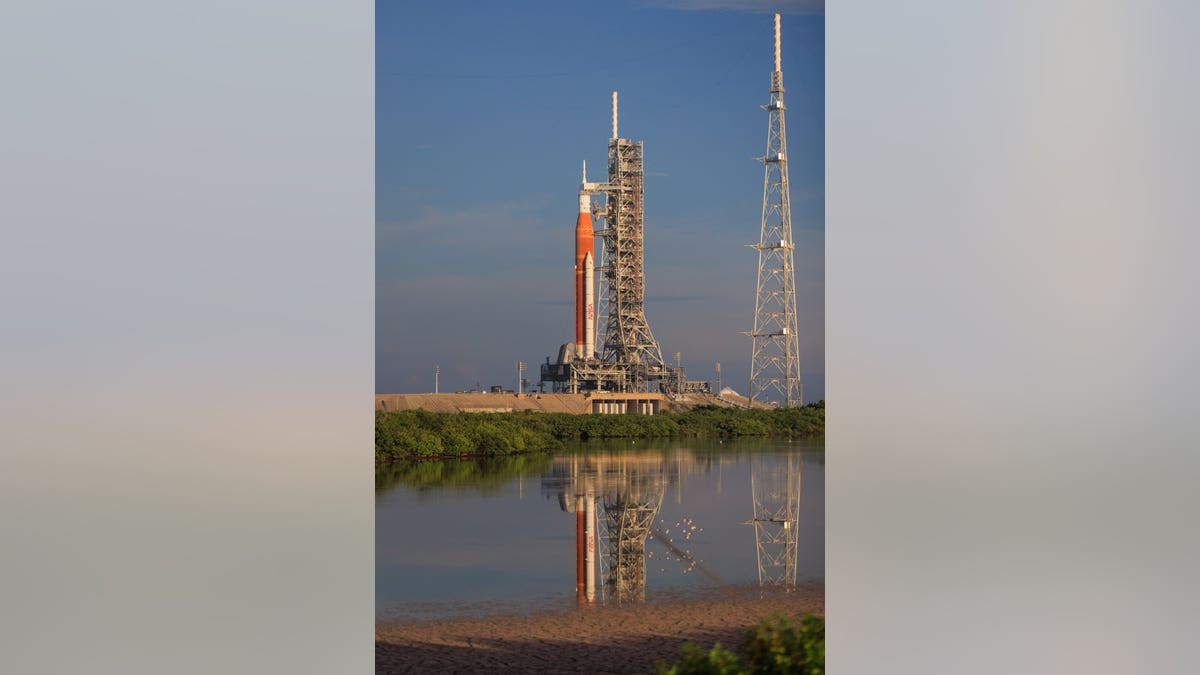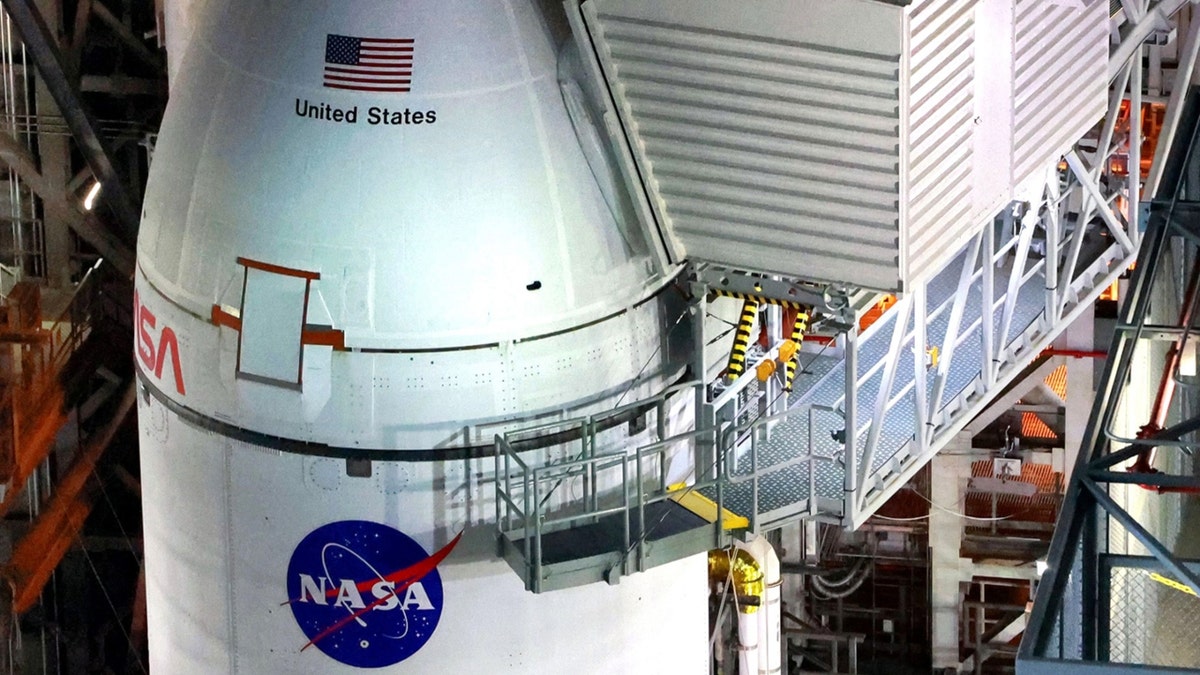NASA's Artemis I launch to bring us step closer to 'sustainable human footprint on the moon'
We're going back to the moon, and it all starts with NASA's Artemis 1 mission, set to launch from Kennedy Space Center on Monday.
CAPE CANAVERAL, FL – The United States is going back to the moon.
It all starts with NASA's Artemis I mission, set to launch from Kennedy Space Center on Monday, Aug. 29.
While there won't be astronauts onboard this flight, the mission will bring NASA one step closer to its goal of landing humans on the moon by 2025.
Florida weather is going to play a big role, but as of Thursday night, NASA says conditions are currently 70% favorable for a Monday morning launch.
NASA A ‘GO’ FOR ARTEMIS LAUNCH NEXT WEEK

NASA's Space Launch System (SLS) rocket is on the launchpad. Over the next 2 days, crews will go through the final preparations before Monday's launch. (NASA)
This launch will kick off the next generation of space missions under the Artemis program, picking up right where the Apollo missions left off. However, this time, the U.S. is not just leaving flags and footprints.
"We barely scratched the surface, scientifically or from an exploration standpoint," said former NASA astronaut Doug Hurley. "The plan is now to have a much more sustainable footprint on the moon and then ultimately use it as a steppingstone to Mars."
Through the Artemis program, NASA's goal is to establish a more permanent human presence on the moon. This could look similar to the U.S. presence in Antarctica. The moon could also be a critical jumping off point for future crewed missions to Mars because it contains the elements, water and hydrogen, needed to create rocket propellant.
"We have to learn everything we can when we're 250 miles away [on the moon] so that when we go to Mars, we have a plan and know what we're going to do," Hurley said.
NASA'S MOON ROCKET ARRIVES AT LAUNCH PAD FOR 1ST TEST FLIGHT
While Hurley has hung up his spacesuit, retiring from NASA last year, he's excited to still have a hand in the upcoming launch through Northrop Grumman, the company that built the rocket boosters for NASA's Space Launch System (SLS) rocket.
"We built the two white solid rocket boosters and provide about 75% of the launch thrust of the vehicle," Hurley said. "It's an incredible amount of power for that first 2 minutes and 6 seconds or so to get the vehicle out of the thicker part of the atmosphere and send it on its way to the moon."

NASA's Space Launch System Rocket and Orion spacecraft is for the Artemis I mission is stationed at the launchpad. (NASA)
Artemis I will be an uncrewed flight to orbit the moon to test the spacecraft systems and make sure everything is in order before humans take the ride on Artemis II.
"We've done wet dress rehearsal testing, where we've gone through a good portion of the countdown and worked through any problems," said Cliff Lanham, the senior vehicle operations manager for NASA's Exploration Ground Systems. "We're feeling good about getting to launch on Monday."
DEBRIS FOUND ON MARS SURFACE LIKELY NETTING, NASA SAYS
The mission will last about 42 days. After orbiting the moon, the Orion space capsule will splash down in the Pacific Ocean.

Artemis I and the Orion spacecraft shortly before rollout to the launch pad as seen from the high bay level inside the Vehicle Assembly Building at Kennedy Space Center, Florida, Launch Complex 39. ((Joe Burbank/Orlando Sentinel/Tribune News Service via Getty Images))
"I'm looking forward to when those solids light on Monday and you feel that pounding in the chest, the roar of the engines," Lanham said. "A lot of people have put in a tremendous amount of work to get us here, and it's going to be an exciting day for us."


